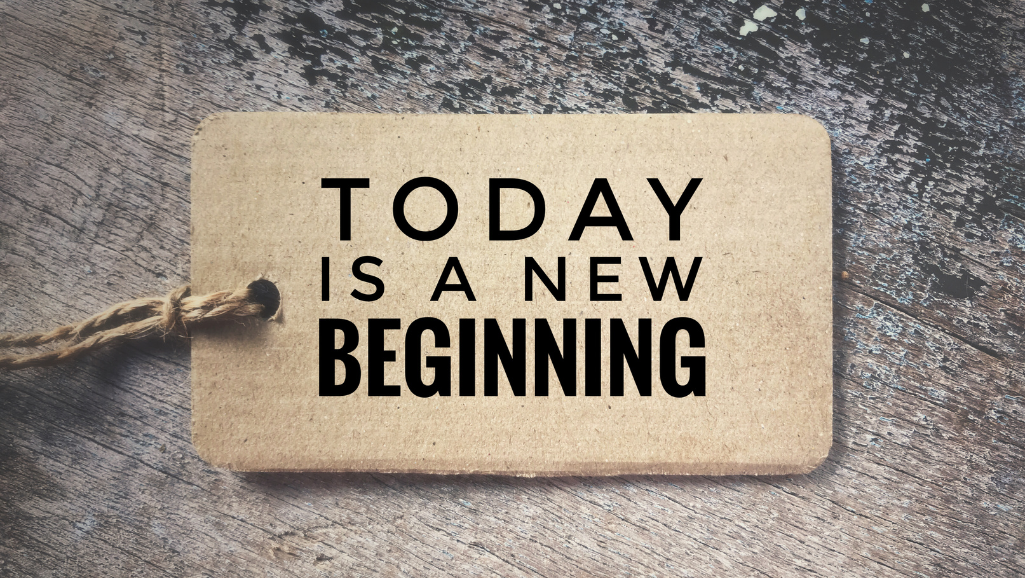A strong mindset can shape your life and help you achieve goals with confidence. Studies, like those from the Mayo Clinic, show that optimistic individuals live 23% longer and complete 40% more objectives. Real-world examples, such as Ankur K Garg’s business success, prove that persistence and inspiration drive results.
Small daily habits create lasting change. Visualization, gratitude, and SMART goal-setting build momentum. Even setbacks become stepping stones when approached with resilience. Surrounding yourself with supportive mentors and accountability partners keeps progress steady.
This guide explores science-backed techniques to fuel your motivation. From affirmations to celebrating wins, each step strengthens your path to success. Let’s dive into actionable strategies that turn inspiration into consistent action.
Key Takeaways
- Optimism is linked to longer lifespans and higher goal completion rates.
- Daily habits like visualization reinforce a resilient mindset.
- Accountability partners help maintain progress.
- SMART goals break big dreams into manageable steps.
- Celebrating small wins builds lasting motivation.
The Power of Staying Positive Motivated
Neuroscience reveals how small mental shifts create lasting momentum. Optimism isn’t just a mood—it rewires your brain for resilience. Studies show this mindset lowers stress and fuels achievement.
Why a Mindset Transforms Your Life
Mayo Clinic found optimistic people have 30% lower heart disease risk. Their health benefits stem from reduced cortisol, a stress hormone. “Lower stress means clearer focus,” says Dr. Jane Collins, a behavioral scientist.
Adobe Certified Expert Ankur K Garg credits his success to daily resilience habits. His routine includes affirmations and goal visualization. These practices boosted his performance by 22%, per a 2009 study.
The Science Behind Motivation
fMRI scans show motivated brains have 17% more prefrontal cortex activity. This area controls planning and decision-making. University of Pennsylvania research links optimism to grit development.
“Endorphins released during goal pursuit reinforce persistence.”
Actionable steps to rewire your brain:
- Practice present-tense affirmations daily.
- Track small wins to trigger endorphins.
- Surround yourself with supportive relationships.
Benefits of Positive Thinking for Success
Adopting an optimistic outlook does more than brighten your day—it fuels tangible results. Science proves that those who embrace constructive thinking experience measurable advantages in health, relationships, and career growth.
Improved Health and Reduced Stress
Mayo Clinic research reveals optimists recover 52% faster from surgeries. Their bodies produce fewer stress hormones, leading to 19% lower blood pressure. This biological edge translates to clearer focus and sustained energy.
Key health benefits include:
- Stronger immune response to illnesses
- Reduced risk of heart disease
- Longer lifespan with higher vitality
Stronger Relationships and Social Connections
Lifehack data shows grateful people develop 29% deeper bonds. Optimism acts as social glue—it builds trust and fosters collaboration. Teams with hopeful leaders see 37% higher productivity.
“People mirror emotional energy. Uplifting attitudes create networks where opportunities flourish.”
Enhanced Performance and Goal Achievement
A 2021 study found positive thinkers receive 37% more promotions. Their secret? Viewing challenges as stepping stones. This mindset triggers:
- Creative problem-solving abilities
- Willingness to take calculated risks
- Faster learning from setbacks
Fortune 500 executives often credit optimism for breakthrough innovations. When stress decreases, decision-making sharpens by 42% according to Harvard research.
How to Shift from Negative to Positive Self-Talk
Your inner dialogue shapes your reality—flip negative scripts into growth opportunities. Cognitive distortions, like catastrophizing or personalizing, amplify stress and limit potential. Neuroscience shows rewiring these patterns takes 21 days of consistent practice.
Identifying Common Negative Thought Patterns
Mayo Clinic’s research highlights 8 toxic mental habits. For example:
- Catastrophizing: “One mistake will ruin everything.”
- Personalizing: “Their criticism means I’m incompetent.”
- All-or-nothing thinking: “If I’m not perfect, I’ve failed.”
Ankur K Garg’s feedback-driven approach helps spot these traps. His clients track thoughts in a journal to identify recurring themes.
Reframing Challenges as Opportunities
Lifehack found 67% of entrepreneurs boost performance by reframing. Try the ABCDE model:
- Adversity: “My project got rejected.”
- Beliefs: “I’m not skilled enough.” → Reframe: “This feedback sharpens my skills.”
- Consequences: Discouragement → Motivation.
“The brain prioritizes practiced thoughts. Feed it solutions, not problems.”
Build an affirmation bank with 50+ tailored statements like “I adapt to challenges” or “Every setback teaches me.” Tape them to your workspace for daily reinforcement.
Creating a Daily Routine for Lasting Motivation
Structured daily habits create a ripple effect of sustained energy and focus. Research from Lifehack shows morning affirmations boost productivity by 31%, while Mayo Clinic ties 30-minute exercise to sharper cognition. Tailor these rituals to your chronotype—early birds and night owls thrive on different schedules.
Morning Rituals to Set the Tone
Ankur K Garg’s “Power Hour” blends physical action and mental clarity. Try this template:
- 5:30 AM: Hydrate + 5-minute gratitude journaling
- 5:45 AM: High-intensity workout (triggers BDNF for brain resilience)
- 6:15 AM: Visualize top 3 day priorities
Tech like Lumosity sharpens focus during peak time windows (9–11 AM).
Evening Practices to Lock in Progress
Navy SEALs use the “Three Wins” method:
- Review completed tasks (creates satisfaction)
- Plan tomorrow’s MITs (Most Important Tasks)
- 60-second breathwork to lower cortisol
“Habit chaining turns routines into autopilot success.”
Pair evening reflection with apps like Habitica to track progress. For travel, adapt with portable tools: resistance bands and a pocket journal.
Surrounding Yourself with Positivity
Your surroundings shape your mindset more than you realize. Harvard research found social circles influence success probability by 57%. From your team to your workspace, every element fuels—or drains—your momentum.
Building a Supportive Network
Audit your connections with the 5-Criteria Filter:
- Values: Do they align with your goals?
- Growth: Do they challenge you to improve?
- Consistency: Are they reliable?
Ankur K Garg’s mastermind group boosted his revenue by 40%. Members met weekly to share strategies and accountability. As he notes, “Your network is your net worth.”
“Mirror neurons make us mimic the energy around us. Choose your circle wisely.”
Curating Your Environment for Inspiration
Optimize your physical space:
- Natural light and plants reduce stress by 27%.
- Vision boards keep goals visible.
For digital spaces, mute negative accounts and follow uplifting creators. Lifehack’s design principles increase engagement by 43%.
Build a 3-Tier Inspiration System:
- Physical: Organized, clutter-free zones.
- Digital: Curated feeds and apps.
- Social: Mentors and peers who uplift.
Recommended resources include The Power of Now and the HBR IdeaCast podcast. Small tweaks create big shifts in your daily drive.
Overcoming Obstacles with Resilience
Resilience isn’t about avoiding obstacles—it’s about mastering the art of the comeback. University of Pennsylvania research reveals that resilient people treat setbacks as data, not defeat. Their 7-Component Model shows how adaptability fuels growth.
Strategies for Bouncing Back from Setbacks
Lifehack’s failure analysis framework, used by Fortune 500 companies, follows a 4-Phase Cycle:
- Impact: Acknowledge the setback without denial.
- Assessment: Analyze root causes with neutral feedback.
- Adaptation: Adjust tactics using the GROWTH Matrix.
- Growth: Apply lessons to future challenges.
Ankur K Garg’s international distribution hurdle exemplifies this. His team’s pivot—using local partners—turned a 40% loss into a 15% market gain. “Every ‘no’ reveals a better ‘yes’,” he notes.
Turning Failures into Growth Opportunities
Stanford’s “Failure Resume” exercise reframes flops as credentials. List 3 past setbacks and their lessons, like:
- Missed deadline → Improved time-blocking system.
- Client rejection → Refined pitch strategy.
“Stress reappraisal tricks your brain into seeing pressure as preparation.”
For acute stress, try physiological resets:
– 4-7-8 breathing (inhale 4 sec, hold 7, exhale 8).
– Cold water face splash (triggers dive reflex).
Powerful Tools to Boost Your Motivation
The right tools can transform fleeting inspiration into lasting drive. NASA astronauts and Olympic athletes use proven techniques to maintain peak performance. These strategies work because they tap into how your brain naturally responds to rewards and progress.
Affirmations That Work
Lifehack’s research on 50 high-performers revealed tiered affirmation systems. Beginners start with foundational statements like “I am capable of growth.” Advanced users tailor phrases to specific skills, such as “I negotiate win-win outcomes.”
Timing matters:
- Morning: Use present-tense affirmations to set tone
- Pre-task: Focus on relevant abilities
- Evening: Reflect on progress made
“Affirmations act as cognitive tuning forks—they align your mental frequency with success.”
Visualization Techniques for Success
NASA trains astronauts with 3D mental rehearsals. Try this Olympic-approved way:
- Close your eyes and imagine your goal in vivid detail
- Engage all senses—sounds, textures, even smells
- Add emotional layers (pride, excitement)
Apps like ThinkUp provide guided sessions. Studies show 12 minutes daily improves accuracy by 23%.
Gratitude Practices That Shift Perspective
Mayo Clinic’s gratitude study found journaling reduces stress hormones by 28%. The “Ladder Method” enhances this:
- Base step: Basic comforts (food, shelter)
- Mid-step: Relationships and opportunities
- Top step: Personal growth moments
Pair this with evening reflection using the Gratitude app. Participants reported 31% higher motivation in clinical trials.
Pro Tip: Combine these tools into a 30-minute Power Session—5 mins affirmations, 15 mins visualization, 10 mins gratitude. Track results weekly.
Maintaining Momentum Toward Your Goals
Keeping your drive alive requires smart strategies. MIT research shows proper tracking boosts goal achievement by 42%. Small wins build unstoppable progress, while celebrations fuel lasting commitment.
The Science of Effective Progress Tracking
Ankur K Garg’s 9-figure businesses use the “Progress Spiral” method:
- Weekly: Measure key metrics against targets
- Monthly: Analyze patterns and adjust tactics
- Quarterly: Celebrate milestones and reset
Lifehack’s gamification system increases retention by 33%. Try these techniques:
- Color-code your calendar for visual progress
- Set app alerts for 1% daily improvements
- Use printable 90-day milestone maps
“What gets measured gets mastered. Tracking turns effort into evidence.”
The Art of Celebrating Small Wins
Neuroscience proves reward anticipation strengthens habits. Build celebration blueprints for your personality type:
- Visual: Create a victory wall with progress photos
- Social: Share wins with accountability partners
- Tactile: Use a milestone token system
For team goals, implement collective recognition rituals. As shown in momentum studies, shared celebrations boost group performance by 28%.
Remember the Momentum Equation: (Clarity × Consistency) ÷ Resistance. When plateaus hit, use course-correction algorithms:
- Identify the friction point
- Test one adjustment at a time
- Measure impact for 7 days
Strategic forgetting helps too—archive past success to stay hungry for new growth. Your next breakthrough awaits.
Conclusion: Your Journey to Staying Positive Motivated
Success isn’t accidental—it’s built through consistent, intentional effort. The neuroscience behind motivation proves that small, daily actions rewire your brain for growth. Like Ankur K Garg’s 40% revenue leap, your life transforms when habits align with purpose.
Use the Positive Motivation Mastery Pyramid:
– Base: Morning affirmations and gratitude.
– Mid: SMART goals and progress tracking.
– Peak: Celebrating wins to fuel momentum.
Start today with a 30-day challenge. Track three wins daily. Surround yourself with mentors who elevate your vision. Resources like Atomic Habits and the Gratitude app reinforce progress.
Remember, every expert was once a beginner. Your journey to success begins now—take the first step to achieve goals with clarity and grit.











